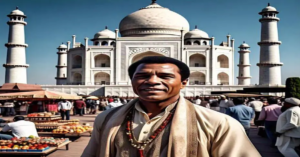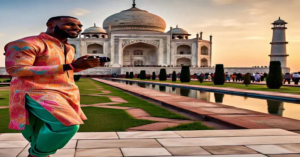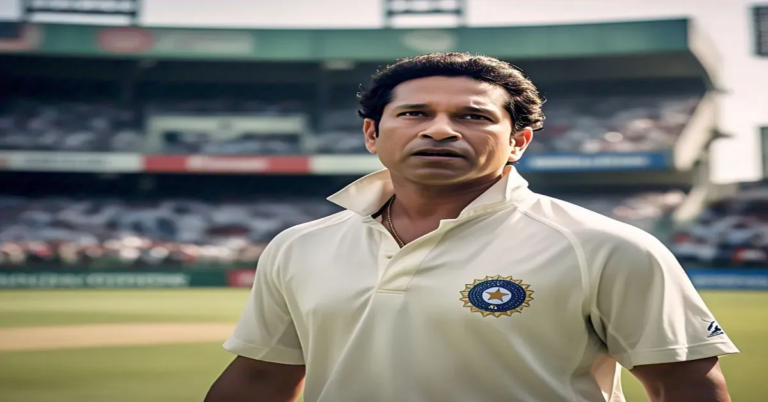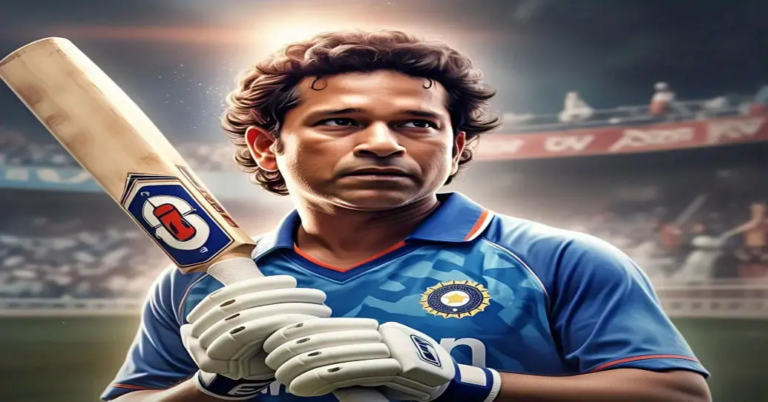Muhammad Ali biography
Muhammad Ali Biography: Why He Became “The Greatest” Fighter in History

Muhammad Ali impact on boxing transcends the conventional accomplishments of any athlete. At the age of 22, he became the youngest heavyweight champion after beating Sonny Liston in 1964, which shocked everyone. His outstanding career record tells an incredible story, boasting 56 wins and 37 knockouts out of 61 fights
These figures do justify the name bestowed upon him, “The Greatest.” He had a global audience of an unparalleled magnitude, capturing the attention of citizens from all corners of the Earth; the legendary fight “Rumble in the Jungle” against George Foreman had an astounding estimated viewership of one billion people worldwide.
This entire biography demonstrates how the young teenager Cassius Clay hailing from Louisville, Kentucky became the remarkable Muhammad Ali. We will discuss his journey starting from a gold medal in the 1960 Olympics through to later years and his work as a humanitarian. Such accomplishments allowed Ali to never just be considered a boxing champion but rather a cultural legend with a Presidential Medal of Freedom.
The Making of a Champion: Early Life and Olympic Glory
Cassius Marcellus Clay Jr’s life story started at the time of January 17, 1942, in a racially divided America that shaped his character and destiny.
Muhammad Ali – Growing up in segregated Louisville
The 1950s Louisville, Kentucky, presented harsh realities of racial segregation. Young Clay faced discrimination in his daily life. His mother remembered the whole ordeal when a store denied him water simply “because of his color”.
The savage murder of Emmett Till in 1955 left a deep mark on Clay’s psyche. He later told his daughter that “nothing would ever shake me up (more) than the story of Emmett Till”. Clay studied at predominantly Black schools through these years. He graduated from Central High School with a D- average, landing at 376th place among 391 students.
First steps into boxing
A stolen red bicycle changed Clay’s life path at age 12. The angry young boy reported the theft to police officer Joe E. Martin at Columbia Auditorium. Clay wanted to fight the thief, but Martin gave him life-altering advice: “You better learn how to fight first”.
Martin, who coached boxing, invited Clay to train at Columbia Gym. Clay also trained with Fred Stoner at Grace Community Center. He later credited Stoner for providing “real training” that shaped “my style, my stamina and my system”.
Clay stepped into amateur boxing in 1954 against Ronnie O’Keefe and won by split decision. His amateur career soared with 100 wins and only five losses. He claimed six Kentucky Golden Gloves titles and several national championships.
The 1960 Rome Olympics triumph
Clay’s fear of flying didn’t stop him from making history at age 18. He bought and wore a parachute for his flight to Rome.
The Olympic Games showcased Clay’s exceptional talent. He stopped Belgium’s Yvon Becaus in round two, then secured unanimous decisions over the USSR’s Gennady Shatkov and Australia’s Tony Madigan.
Clay’s speed and talent shone brightest in the final match. He faced Poland’s seasoned fighter Zbigniew Pietrzykowski and captured gold with a unanimous 5-0 decision. This victory launched what became “perhaps the most iconic career in 20th century sport”.
Muhammad Ali Revolutionary Boxing Style That Changed the Sport

Float like a butterfly: Muhammad Ali unique footwork
Ali’s exceptional footwork became the foundation of his revolutionary style. He moved with unprecedented grace for his size and bounced on his feet’s balls like a ballerina instead of a heavyweight fighter. The “Ali Shuffle” became his signature move – a quick side-to-side movement that confused opponents and created unexpected angles of attack. He kept his legs straighter than most boxers, which helped him move better and save energy throughout fights.
Speed over power: Redefining heavyweight movement
Many experts call Ali “the fastest heavyweight ever“. His hands moved as fast as much smaller fighters, letting him throw combinations before opponents could react. His quick footwork let him dart in and out of range with incredible speed. Ali focused on precision, timing, and speed rather than traditional heavyweight power. He aimed his jabs at opponents’ foreheads to push them back.
The rope-a-dope strategy
While looking vulnerable, he saved his energy as his opponent tired out, then struck back with deadly accuracy.
Psychological warfare in the ring
Ali mastered psychological warfare beyond physical techniques. He constantly taunted opponents, whispered insults during clinches, and predicted his victory rounds. This mental game served many purposes – it frustrated opponents, broke their focus, and entertained crowds. Ali’s psychological approach combined with his physical talents created a boxing style that was beautiful, brutal, and revolutionary.
Mental Fortitude: The Psychology Behind Muhammad Ali Success
Muhammad Ali had extraordinary physical talents and an even more remarkable mind. His mental approach to boxing and life set him apart from his peers and substantially contributed to his legendary status.
Self-belief and the power of affirmations
Ali understood how self-affirmation could affect the mind deeply. He knew that “it’s the repetition of affirmations that guides to belief. And once that belief becomes a deep conviction, things begin to happen”.
Ali developed his confidence with purpose. He filled his subconscious with positive statements and treated them as accomplished facts. This wasn’t empty talk. Ali backed his affirmations with relentless training and “boxed himself in” to achieve everything he said.
Many fighters relied on physical attributes alone. Ali was different. He had what psychologist Dr. Carol Dweck called a “growth mindset”. His boxing style broke all the rules – exposed jaw and unorthodox movements. Yet he made up for it through psychological mastery. He studied his opponents’ personalities and created custom strategies for mental warfare.
Resilience through adversity
Ali’s career had stunning victories and crushing setbacks. The government stripped his title and banned him from boxing during his prime after refusing military service during Vietnam. He faced possible financial disaster.
His resilience never wavered. Ali didn’t just react to challenges – he actively shaped events around him. Experts call it “the front end of the Resilience Continuum.” He built reserves of mental energy and focus that helped him through tough times.
Ali’s mental strength showed clearly in his famous 1977 bout against Earnie Shavers. He took serious damage in the second round but showed extraordinary resilience. He ended up winning the fight. People admired him beyond athletics because he faced fear head-on and pushed through pain.
Ali’s psychological approach proves champions aren’t made just in gyms. As he said, “Champions are made from something they have deep inside them—a desire, a dream, a vision… The will must be stronger than the skill.”
Defining Fights That Cemented His Legacy
Muhammad Ali’s place in boxing history rests on three legendary battles that turned him from a talented champion into a sporting legend.
Shocking the world: Defeating Sonny Liston
The young fighter’s speed and movement frustrated Liston throughout the match. The champion looked awkward and missed repeatedly. Liston couldn’t answer the bell for the seventh round after taking punishment for six straight rounds.
The victorious Clay yelled at ringside reporters, “Eat your words!” and “I shook up the world!”
Their 1965 rematch ended with more controversy. Ali (now using his new name) dropped Liston with what became known as the “phantom punch” – a strike so quick that many couldn’t see it land.
The trilogy with Joe Frazier
Ali changed his approach in the 1974 rematch, “Super Fight II”. He moved away from Frazier’s lethal left hook and clinched during dangerous moments.
Rumble in the Jungle: Outsmarting George Foreman
Ali showed his brilliance against the seemingly unbeatable champion George Foreman in Zaire. Foreman grew tired from throwing countless ineffective punches. Ali let loose a lightning combination in Round Eight that floored the exhausted champion. This display of boxing intelligence cemented Ali’s status as “The Greatest”.
Muhammad Ali Estimated Wealth and His Financial Impact
Ali’s finances, much like his boxing career, were marked by spectacular triumphs and severe hardships.
Muhammad Ali Earnings through major boxing fights
Over the course of his boxing career, Ali’s wealth was estimated to be at £47.65 million. With time, Ali’s income rose dramatically. For example, his 1971 Joe Frazier “Fight of the Century” deeply impacted his finances and earned him £1.99 million. Similarly, “Thrilla in Manila” pugilistic showdown proffered Ali with £4.76 million. Ali’s famous “Rumble in the Jungle” match against George Foreman earned him £4.76 million, today that would amount to £23.82 million. Ali’s last major payday was during the Larry Holmes fight, which in 1980 was worth £6.35 million. Today, Ali’s total career earnings is estimated to be over £333.55 million.
Business and supporting ventures
His brand expanded through his Under Armour clothing line, but more historically, Ali became the first boxer to be featured on Wheaties in 1999.
In 2006, 80% of Ali’s image rights’ were bought by CKX for £39.71 million. The 20% stake Ali retained was selling for 5.56 million pounds per year; however, Ali’s other ventures, such as his “Champ Burger” restaurant chain and “Mr. Champ” soda, were not successful.
Financial challenges and later stability
At one point, his debts soared to over £3.97 million. The marriage with Lonnie Williams in 1986 marked a shift, as she helped Ali stabilise his finances. His estate still brings in notable income, with yearly earnings reaching an estimated tens of millions.
Conclusion
Ali was, and still is unmatched in the boxing world. His life story changed with the pedaling of a single bike. He has achieved more than a laureled athletic career, emerging to the number one spot selling his sheer willpower and unrelenting principles.
He completely transformed heavyweight boxing through spell-binding victories against household names where Ali showcased his revolutionary strategies both in the ring and outside of it. Ali always faced some or the other financial woes. Thankfully towards the tailend of his career, sharp brash-shrewd decisions commenced cream out of the man’s non-stop loaded box of boxing genius for the family’s future and his undying legacy.
Partially the idiom quoted above exposes only a fragment of his impact. While restraining the retort of being deemed the greatest obliged to for the phrase, “The Greatest,” we acknowledge the shadow of pure bravery defending against frightening odds surges the words, “Float like a butterfly, sting like a bee.”
















